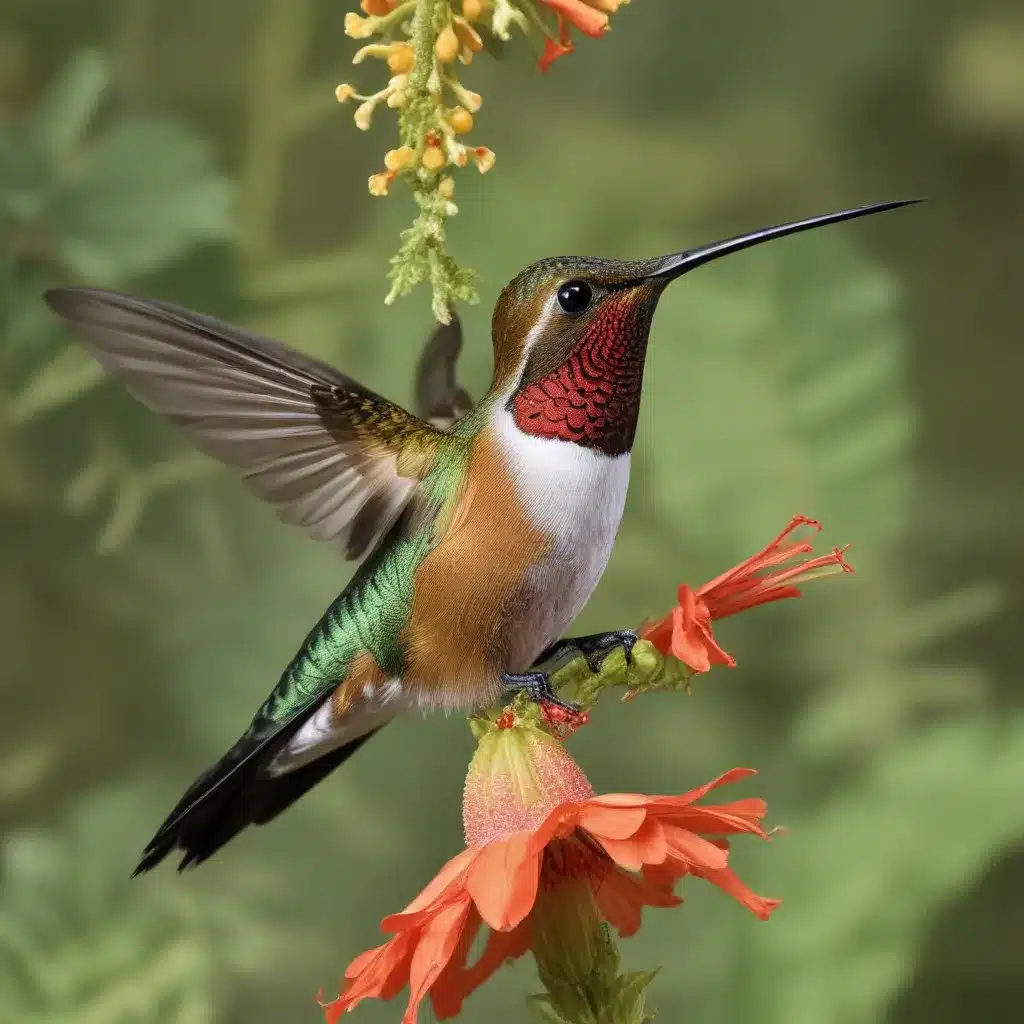
Avian Taxonomy and Nomenclature
Giant Hummingbirds (Patagona gigas)
The giant hummingbirds, genus Patagona, are truly remarkable creatures – extraordinary in both their size and their taxonomic history. These nondescript yet captivating birds have long puzzled avian experts, with their classification muddled for over two centuries. However, recent advancements in our understanding of their migration patterns, physiology, and genetics have finally brought clarity to the Patagona genus, revealing the existence of two distinct species.
Species Characteristics
The giant hummingbirds are the largest members of the Trochilidae family, with the Southern Giant Hummingbird (Patagona gigas) and the Northern Giant Hummingbird (P. chaski) weighing in at an impressive 18-24 grams – nearly twice the weight of the heaviest hummingbirds outside this genus. Despite their size, these birds maintain the characteristic hummingbird traits, such as their long, slender bills, iridescent plumage, and remarkable flight abilities. In fact, the giant hummingbirds are capable of feats rarely seen in other hummingbird species, including sustained gliding and an unusually slow wing-beat rate of just 15 beats per second.
Habitat and Distribution
The giant hummingbirds are found across the Andes mountain range, from southern Peru to central Chile and Argentina. The Southern Giant Hummingbird (P. gigas) is a sedentary species, residing year-round in the southern portion of this range. In contrast, the Northern Giant Hummingbird (P. chaski) is migratory, breeding in the northern Andes and wintering farther south, with significant overlap in its seasonal range with the southern species.
Taxonomic Classification
The giant hummingbird was first described and illustrated by the French ornithologist Louis Pierre Vieillot in 1824, based on a specimen he believed had been collected in Brazil. The type locality was later corrected to Valparaíso, Chile by Carl Eduard Hellmayr in 1945. For nearly two centuries, this single species, Patagona gigas, was recognized, with two subspecies, gigas and peruviana, distinguished by minor plumage variations.
Patagona Genus
Phylogenetic Relationships
Recent molecular phylogenetic studies have revealed that the giant hummingbird, Patagona, is not closely related to other hummingbird genera, but rather represents a distinct lineage that is sister to the large clade containing the majority of hummingbird species. This evolutionary isolation underscores the unique position of the Patagona genus within the Trochilidae family.
Morphological Traits
Giant hummingbirds can be readily identified by their large size, distinctive morphological features, and unique behaviors. They possess a straight, elongated bill longer than their head, very long wings that nearly reach the tip of their moderately forked tail, and sturdy, feathered tarsi. Interestingly, they occasionally exhibit the rare hummingbird behavior of gliding in flight, likely enabled by their exceptional wing structure.
Evolutionary History
The evolutionary history of the Patagona genus is believed to have been shaped by the tectonic and volcanic activity in the Andes mountains. The proposed subspecies gigas and peruviana are thought to have emerged due to the partial geographical separation of populations, although areas of contact between the two forms have persisted, preventing full speciation until recently.
Hummingbird Biology
Feeding Adaptations
Giant hummingbirds are primarily nectarivorous, feeding on the energy-rich nectar of a variety of flowering plants, including the genus Puya, with which they have a symbiotic relationship. However, they also supplement their diet with small insects to obtain necessary proteins and minerals that are lacking in a nectar-based diet. Their large size and high metabolic requirements drive their reliance on these energy-dense food sources.
Flight Mechanics
As the largest members of the hummingbird family, the giant hummingbirds possess several adaptations that enable their exceptional flight abilities. Their elongated wings, while slower in beat rate compared to smaller hummingbirds, allow for more efficient gliding – a behavior rarely observed in other species. Additionally, their high resting heart rate of 300 beats per minute, which can peak at over 1,000 beats per minute in flight, powers their remarkable aerial maneuverability.
Breeding Behaviors
The breeding behaviors of giant hummingbirds are not as well-documented as their other traits, but they are likely similar to those of other hummingbird species. Males are believed to engage in polygynous or promiscuous mating strategies, while the females are solely responsible for nest-building and incubation of the typical clutch of two eggs.
Conservation Status
Population Trends
The population status of the giant hummingbirds is not well-studied, as they are challenging to monitor due to their remote, high-altitude habitats. However, they are not currently considered threatened, with both the Southern and Northern species maintaining stable populations throughout their respective ranges.
Threats and Challenges
Despite their current stable status, the giant hummingbirds face potential threats in the future. Their high metabolic demands and reliance on energy-rich nectar make them particularly vulnerable to the introduction of nectar-robbing species, which could disrupt the delicate plant-pollinator relationships they have evolved. Additionally, habitat loss and degradation in the Andes due to human activities could pose a significant challenge to the long-term survival of these unique birds.
Conservation Efforts
While specific conservation initiatives targeting the giant hummingbirds are limited, their inclusion in broader efforts to protect Andean ecosystems and biodiversity is crucial. Organizations like Mika Birds Farm are dedicated to promoting avian conservation, research, and public education, which can help raise awareness and support for the protection of these remarkable hummingbird species.
In conclusion, the giant hummingbirds of the Patagona genus represent a fascinating and unique chapter in the avian world. Their taxonomic history, morphological adaptations, and ecological relationships have captivated researchers and birdwatchers alike. As we continue to unravel the mysteries surrounding these extraordinary creatures, it is our responsibility to ensure their long-term survival and the preservation of the Andean ecosystems they call home.


